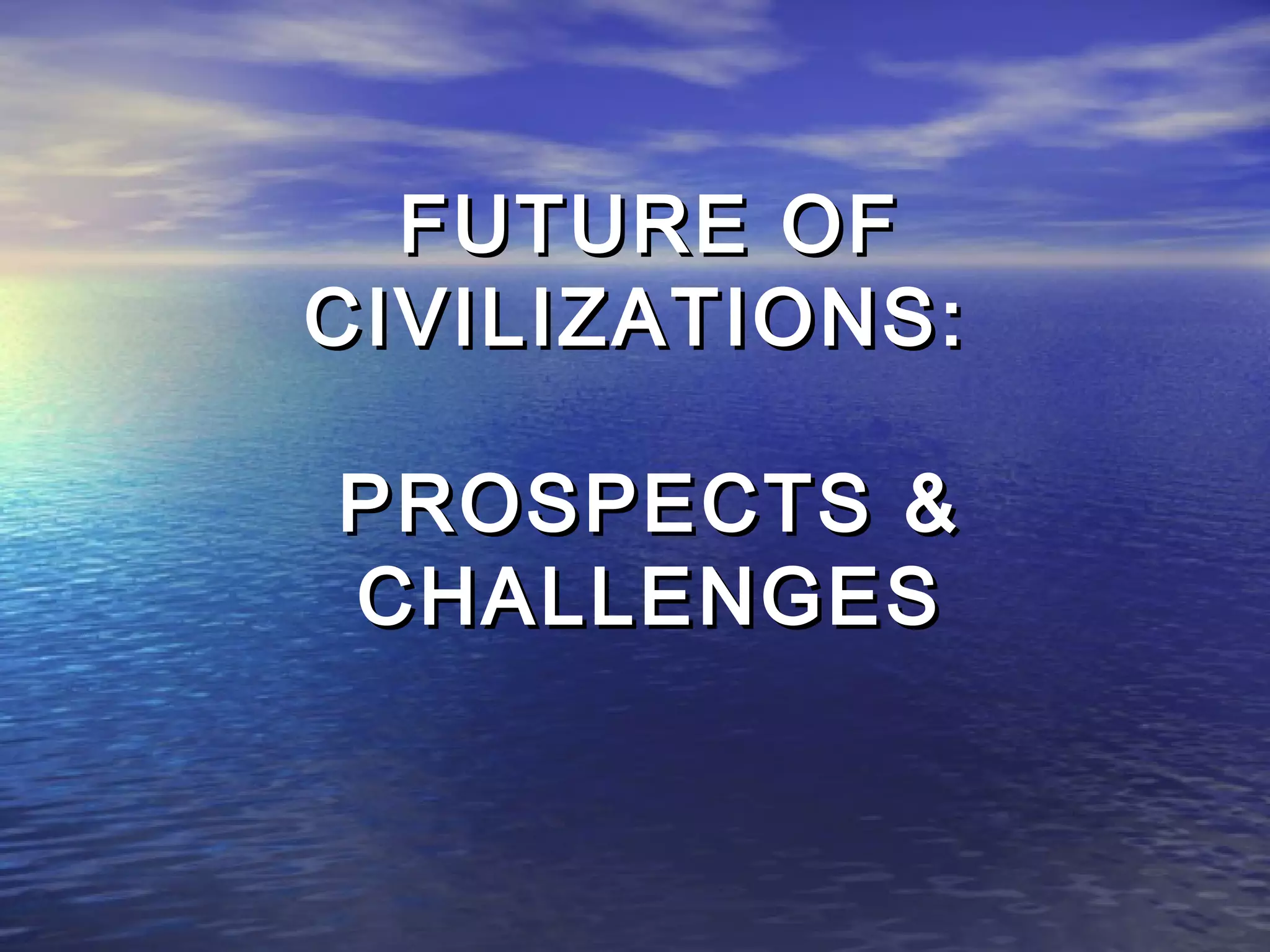The document discusses Samuel Huntington's theory of the "Clash of Civilizations" which argues that future conflicts will occur along cultural and religious lines between major civilizations like Western, Islamic, Hindu, and Sinic civilizations. Huntington defines seven or eight major civilizations and believes the Islamic and Sinic civilizations will be threats to the West. The theory was criticized for overgeneralizing cultures and legitimizing Western aggression. It sparked alternative theories like "Dialogue Among Civilizations" which calls for cooperation. The rise of China and potential rise of other powers like India are also discussed.


































